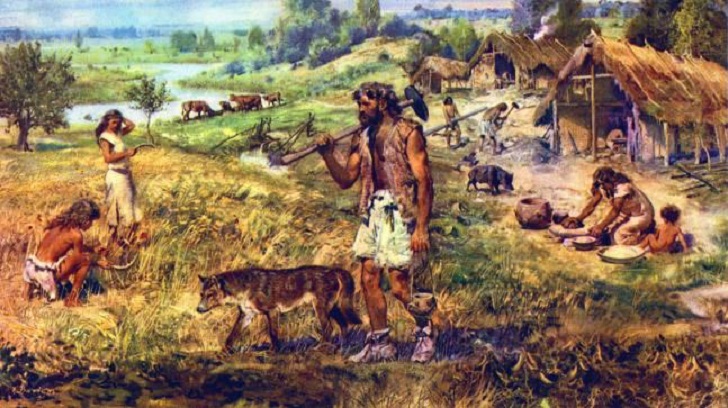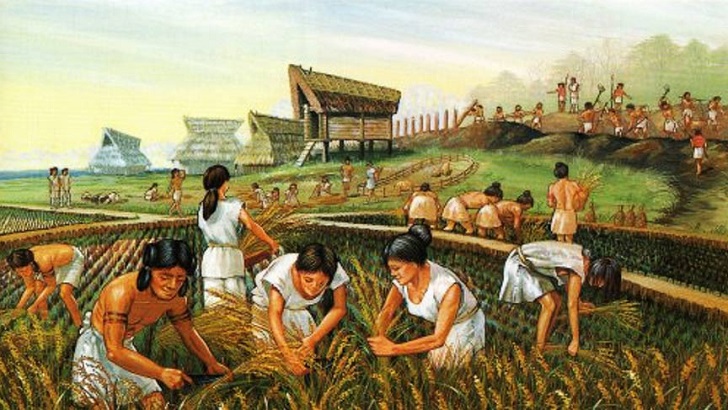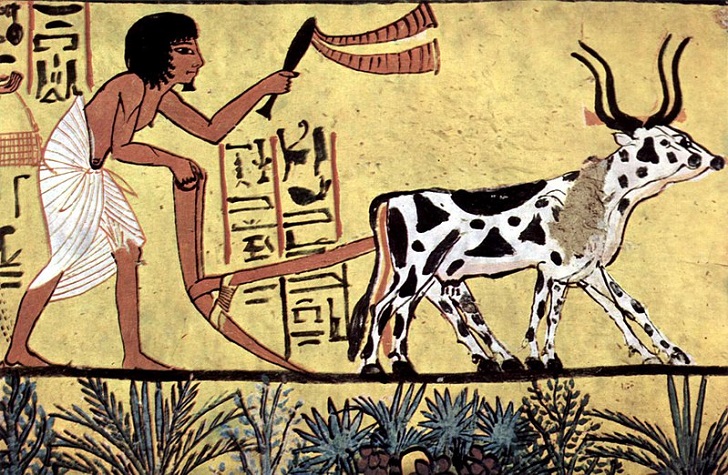Modern agricultural innovations aren't necessarily highly sophisticated. Growers are searching the past for techniques that will guarantee soil health and increase yields on farms all around the world. Farming communities from the distant past developed methods like soil terracing, intercropping, and integrated crop-livestock systems to preserve soil fertility and structure or boost yields. Simpler techniques can still be beneficial for many farmers now, just as they were in the past.
Ancient farming techniques

Wikimedia/ Maler der Grabkammer | A good farmer is nothing more nor less than a handyman with a sense of humus
European scientists have recently advocated the use of traditional farming methods to enhance soil health, yield many nutrient-dense crops, and absorb greenhouse gases. The researchers, Dr. Peter Leinweber of the University of Rostock in Germany, examined the nutrient-rich, dark soil in 12 places throughout Northern Europe, including plots of land in Norway, Denmark, and Germany. The earth under study has extraordinarily high quantities of phosphorus, which is necessary for strong plant growth. But why are certain particular locations where the earth is particularly fertile?
The researchers discovered that the richness and fertility of the soil have everything to do with the organic materials ancient farmers had pushed into the ground long ago using synchrotron light from the Canadian Light Source (CLS). Charred material inputs were discovered during the examination, but other sources of organic materials were also discovered. The research team was able to use compost, peat, animal dung, and human waste because of the technology at the CLS.

Wikimedia/ Maler der Grabkammer | There are 914 million acres of farmland just in the U.S
The scientists employed carbon dating of the organic elements to establish that soil formation in the Baltic Sea region occurred in a sequence between the Nordic Bronze Age and the Roman Iron Age. Regarding the soil samples from Norway, extensive careful loving care took place between the Roman Iron Age and the Viking Age.
According to Leinweber, the extremely rich soil in these locations can be attributed to members of a Nordic Early Neolithic farming culture. These folks have been around for 6,200–4,800 years! These findings, reported in the journal Soil Systems, provide evidence that a world in need of nutritious fruits and vegetables may be fed by sustainable, organic farming methods that maintain high soil fertility for many generations.
New technology with old techniques

Wikimedia/ Maler der Grabkammer | The Egyptians grew a variety of crops for consumption, including grains, vegetables and fruits
Early farmers chose the best methods for preserving their land and enhancing crops through observation and trial and error. Agronomists can now test and gauge precisely how these time-tested practices are enhancing the profitability and soil health of farms. Additionally, more farmers can experiment with these methods because of agtech advancements like wireless soil sensors that simplify fertiliser management.
One Hawaiian farmer, for instance, is evaluating whether intense rotational grazing with sheep and chickens would enhance his soil conditions and increase the number of microbes in his farm's soil using a $20,000 grant from the USDA's Sustainable Agriculture Research & Education programme.
In a 2017 study on intercropping, scientists evaluated the responses of sorghum crops in Mali and Niger to certain nutrient inputs to forecast how well those crops would perform if intercropped with peanuts. Knowing that sorghum and peanuts grew better together decreased risks for farmers if they planted only one or the other as both are valuable subsistence crops.








